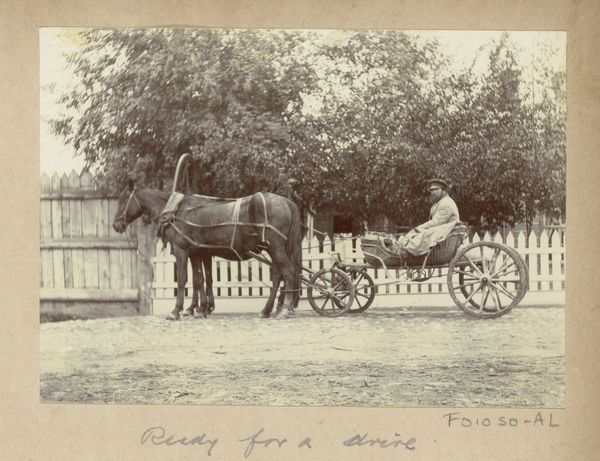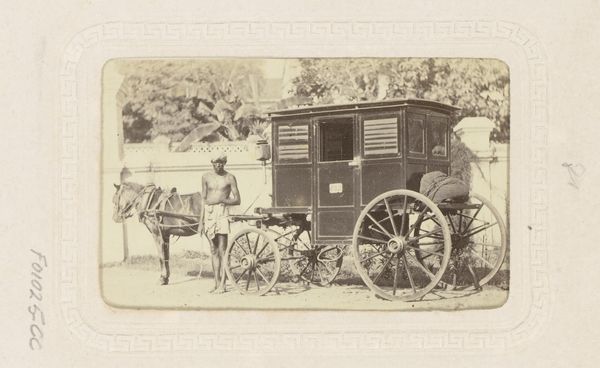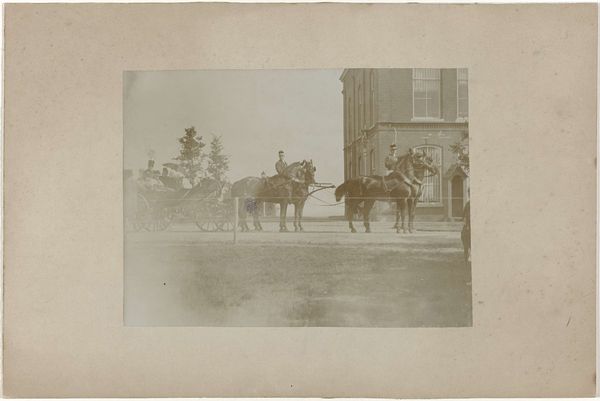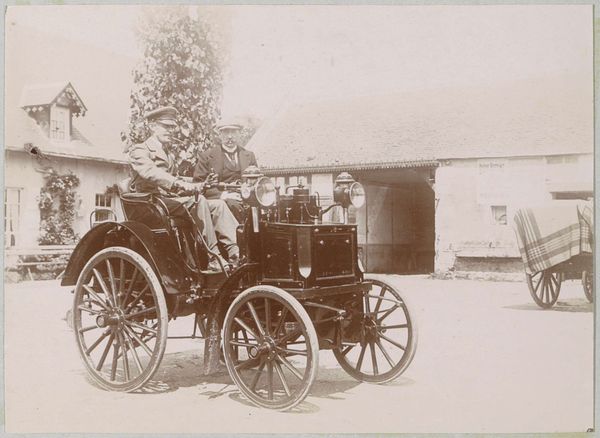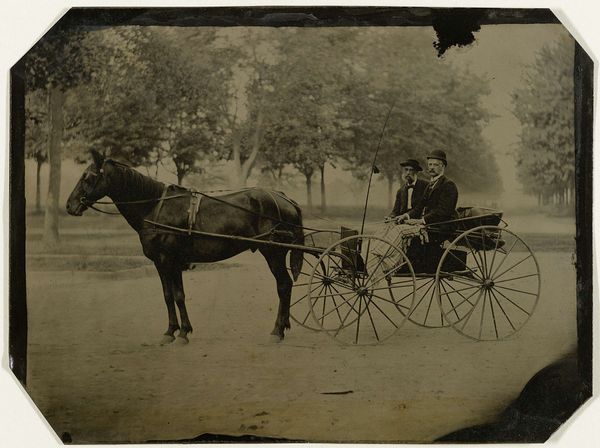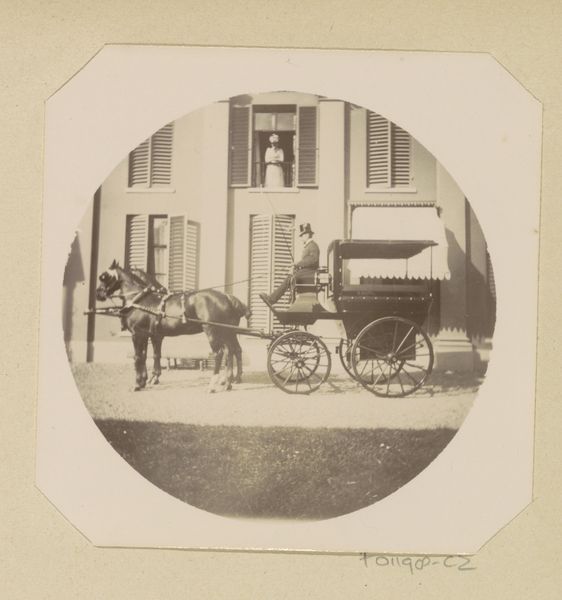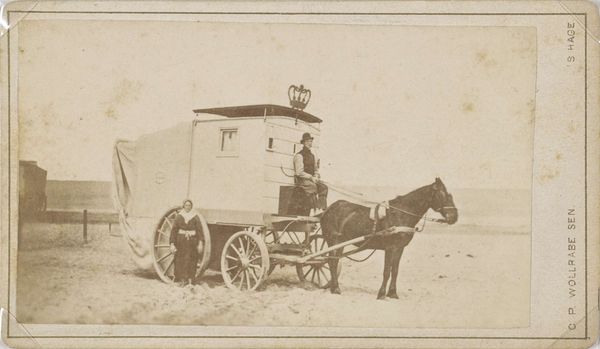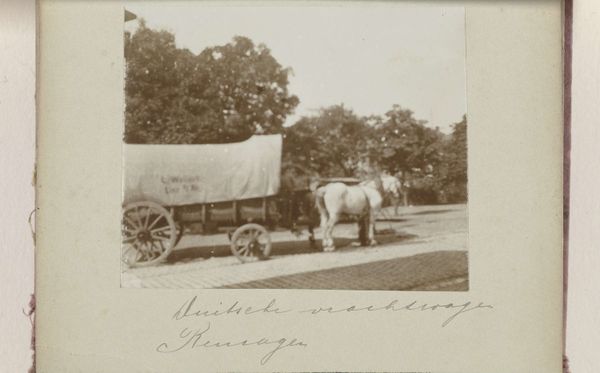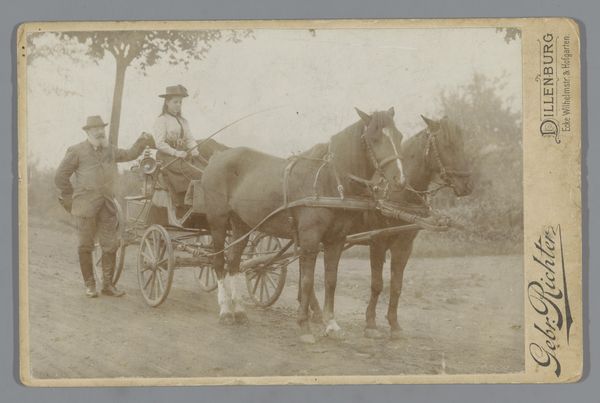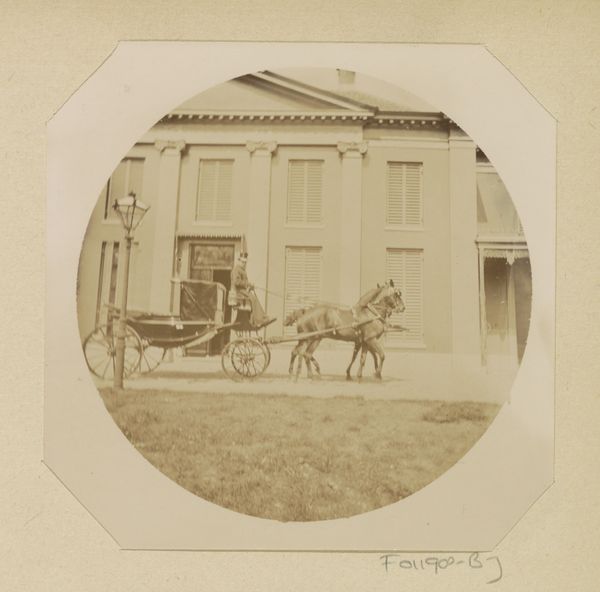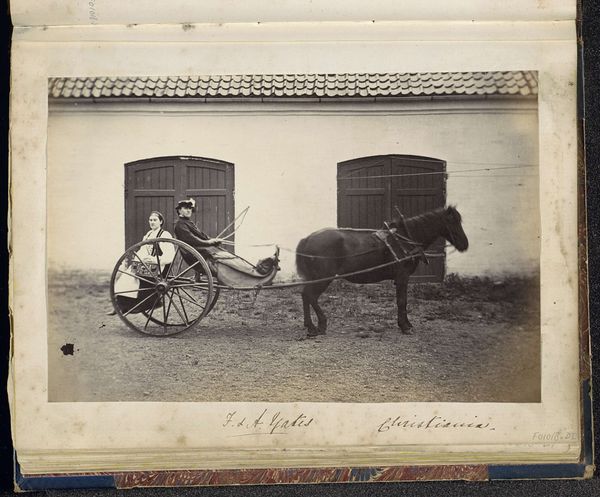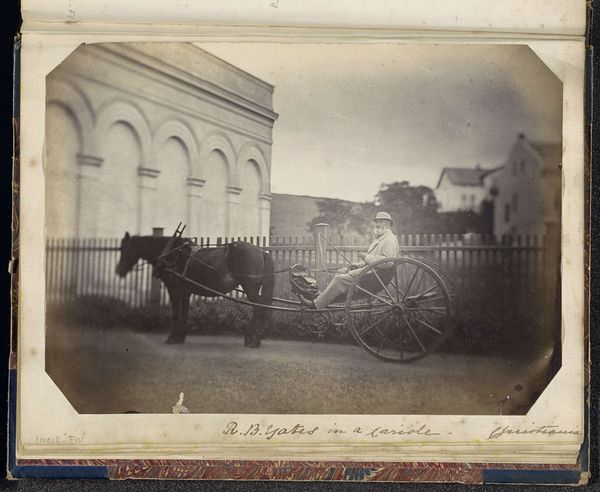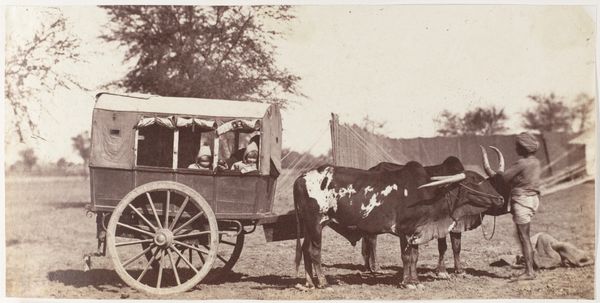
photography
#
16_19th-century
#
landscape
#
photography
#
horse
#
genre-painting
#
realism
Dimensions: height 82 mm, width 126 mm
Copyright: Rijks Museum: Open Domain
Curator: Allow me to introduce a photograph believed to be from the 1860s or 70s. Its caption identifies the subjects as Captain Matthews and Miss Johnson in a kariool in Drøbak, Norway. Editor: There's something quite immediate about this image. I am struck by the quiet composure and evident formality of this encounter. I’m very intrigued by the textures at play here--the polished carriage, the horse's fur, and the somewhat rigid outfits, everything suggesting a meticulous presentation. Curator: Yes, the photographer uses the limitations of the medium quite well, capturing texture in lieu of a broader tonal range. The architectural lines of the house are echoed by the crisp angles of the carriage. Semiotically, this pairing subtly reinforces the order and societal structures they represent. Editor: It makes me think about the material conditions required to create an image like this in the 19th century. The cost of the equipment, the processing...these would be members of a privileged class indeed. And how much of the work went into just wrangling the horse? Curator: Quite. We can analyze this by unpacking its symbolic structure: The horse, an obvious signifier of status. The somewhat tense pairing of captain and maiden on a clearly delineated social stage… all these reinforce established hierarchies. Editor: Precisely. Thinking materially, this would be one of relatively few visual records for them and others of that status at the time, compared to the working classes whose likenesses weren’t circulated in this manner. Also, how does the location, Norway, play into this visual narrative of wealth and leisure? It raises a question of representation that is difficult to extract given the technology limitations during its production. Curator: It’s difficult to see their expressions in this still life, which almost removes the personal touch and leans into structural representations. Though this image captures two distinct persons in a shared reality, its deeper value perhaps lies in portraying the greater constructs of societal structure in 19th-century Norway. Editor: In conclusion, examining "Kapitein Matthews en mejuffrouw Johnson in een kariool in Drøbak," shows how early photographic technology helped perpetuate social boundaries through materiality and careful subject selections. Curator: Indeed, this frozen moment becomes less about these individuals, and more about deciphering their roles within a precise societal ballet.
Comments
No comments
Be the first to comment and join the conversation on the ultimate creative platform.
